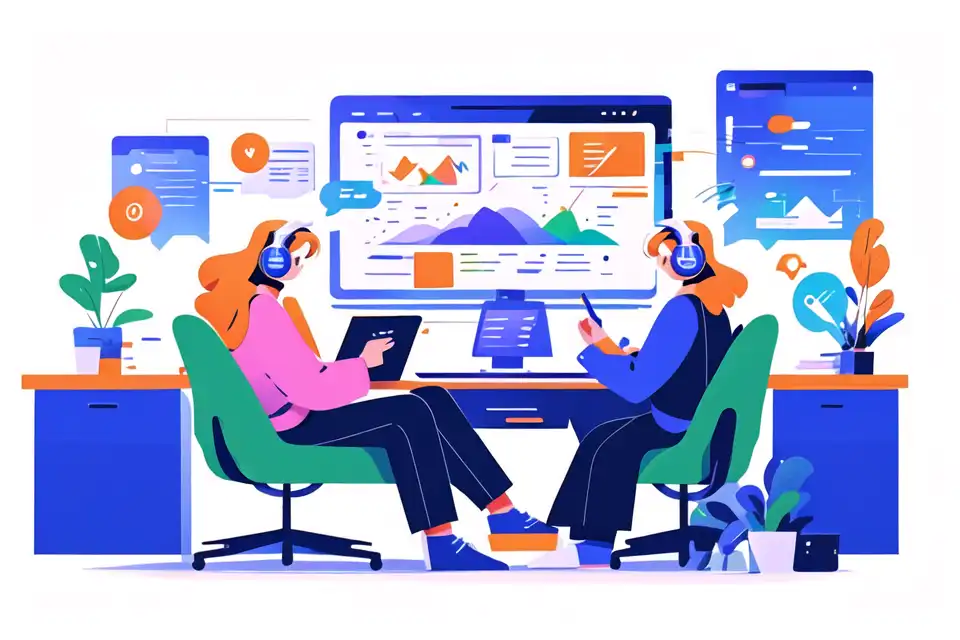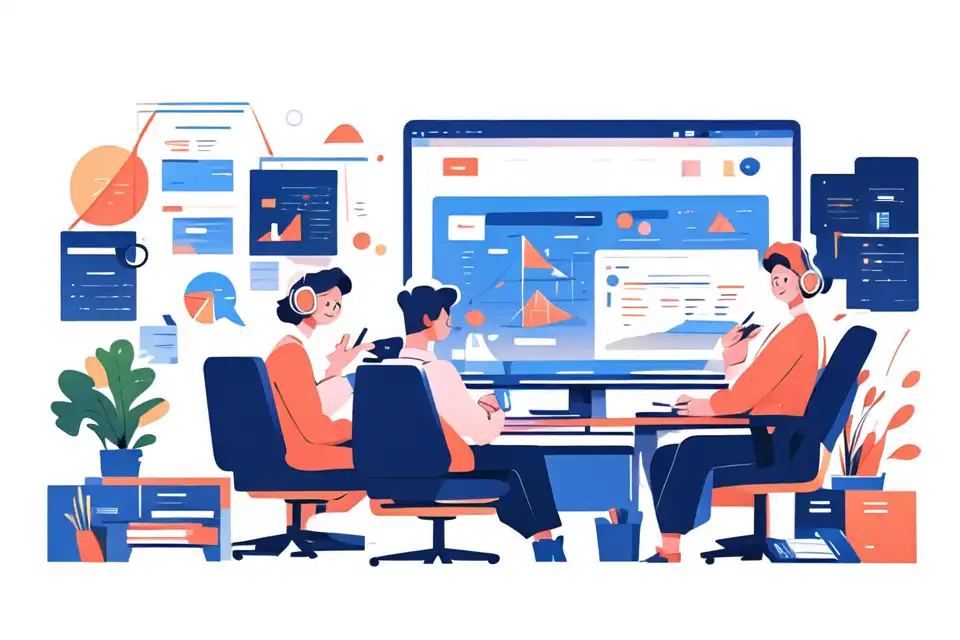Education Software For Schools
Learn about the top tips and strategies in education software for schools
Try Lark for Free
In our rapidly evolving digital age, educational software has emerged as a central pillar in the educational landscape. As schools strive to provide quality education, the integration of technology in learning environments has become inevitable. From primary schools to higher learning institutions, educational software is transforming the way teaching and learning processes are conducted. This article delves into the world of educational software, its role, importance, benefits, successful implementation strategies, potential challenges, and future direction. Let's explore this journey together.
Unlock the power of Lark to elevate your business operations. Discover actionable strategies and best practices in our comprehensive guide.
Understanding the role and importance of educational software in schools
Just as the business world has been revolutionized by technology, so has the education sector. Educational software has shifted from being a mere supplement to a vital component in classroom processes.
The Evolution of Educational Software in the Educational Landscape
From the early days of rote learning and blackboards to today's interactive online learning platforms, the classroom has seen a significant transformation. A key driver in this evolution is educational software, which has evolved from rudimentary tools to advanced solutions that facilitate interactive learning, personalized lesson plans, and real-time student assessments.
The Impact of Educational Software on Modern Learning Environments
Modern classrooms are no longer confined to four walls. With educational software, learning has become a 24/7 process, transcending the boundaries of time and space. It has made education more accessible, interactive, and engaging, enabling students to learn at their own pace and convenience.
Current Trends and Statistics on Educational Software Adoption in Schools
Data from a recent study shows that 73% of teachers use educational software daily for instruction. Meanwhile, 98% of schools have at least one digital device per student. These figures underscore the growing trend of digital education and the increasing reliance on educational software.
Recognizing the benefits of educational software for school
The adoption of educational software in schools is not without its merits.
Enhancing Teaching and Learning Experiences
Educational software offers a plethora of features designed to enrich teaching and learning experiences. For instance, it provides a vast array of learning materials in various formats such as videos, infographics, quizzes, and more.
Boosting Student Engagement and Outcomes
Through gamification, interactive lessons, and personalized learning paths, educational software enhances student engagement and boosts learning outcomes. It allows students to grasp complex concepts more easily and retain information longer.
Related:
Education Solution | LarkLearn more about Lark can help you with everything mentioned so far in the article.
How to successfully integrate educational software into schools
The successful integration of educational software in schools requires a strategic approach.
Step-by-Step Guide to Implementing Educational Software
From identifying the right software to training educators, implementing educational software involves several steps. These include assessing schools' specific needs, choosing the appropriate software, securing necessary resources, training staff, and continuously evaluating the software's effectiveness.
Necessary Tools and Resources for Successful Integration
Successful implementation requires more than just purchasing the software. Schools also need to invest in training, infrastructure, and ongoing support to ensure the effective use of the software.
Real-world examples of successful educational software implementation
Successful implementation of lark in an education institution
Successful implementation of lark in an education institution
Lark has been successfully adopted by numerous schools worldwide, enhancing collaboration, communication, and learning among students and teachers.
How lark is transforming virtual learning in a high school
How lark is transforming virtual learning in a high school
In one high school, Lark has transformed virtual learning by providing students with a comprehensive platform that combines video calls, chat, and document collaboration.
Case study: lark's impact on remote learning in a primary school
Case study: lark's impact on remote learning in a primary school
A specific case study of a primary school reveals how Lark has made remote learning possible and effective, enabling students to continue their education despite the pandemic.
Learn more about Lark can help you with everything mentioned so far in the article.
Potential challenges and solutions when adopting educational software
Despite its benefits, implementing educational software can pose some challenges.
Identifying and Overcoming Implementation Hurdles
Challenges such as resistance from staff, lack of training, and inadequate infrastructure can hinder effective implementation. However, these hurdles can be overcome through adequate planning, training, and support.
Strategies for Ensuring Successful Adoption and Integration
Ensuring successful adoption requires a holistic approach that includes ongoing training, regular evaluation, and continuous improvement.
The future of educational software in schools
As technology continues to evolve, so will educational software.
Emerging Trends in Educational Software
From artificial intelligence to augmented reality, emerging technologies are set to revolutionize educational software, offering more immersive, personalized, and engaging learning experiences.
Predictions for the Future Impact of Educational Software on Education
Experts predict that educational software will soon become an integral part of every classroom, shaping the future of education in ways we can only imagine.
Learn more about Lark can help you with everything mentioned so far in the article.
Conclusion: embracing the power of educational software in schools
The adoption of educational software in schools is more than just a trend; it's a strategic move towards enhancing quality education in the digital age.
Tips for do's and dont's when implementing educational software
| Do's | Don'ts |
|---|---|
| Do invest in staff training. | Don't underestimate the importance of infrastructure. |
| Do regularly evaluate the software's effectiveness. | Don't ignore potential resistance from staff. |
| Do involve all stakeholders in the decision-making process. | Don't rush the implementation process. |
Related:
Education Solution | LarkLearn more about Lark can help you with everything mentioned so far in the article.
Unlock the power of Lark to elevate your business operations. Discover actionable strategies and best practices in our comprehensive guide.








